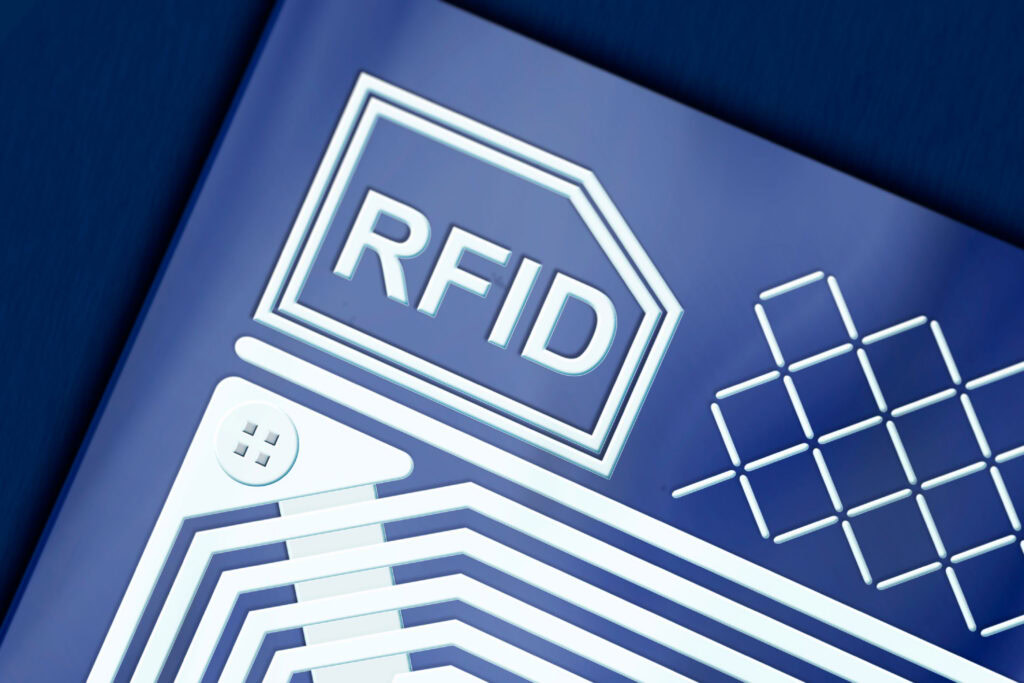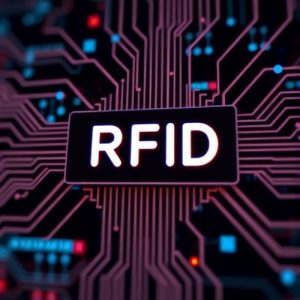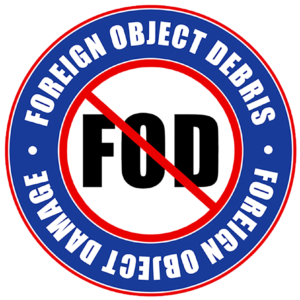Choosing the right RFID tag for industrial applications is no simple matter: technology, price, performance, resistance to stress (temperature, dust, etc.), compatibility with the object to be tracked, etc. In this blog post, Nexess presents a practical guide to choosing the right RFID tag for an industrial application.
Reminder: what is an RFID tag?
An RFID (Radio Frequency Identification) tag is an electronic device that automatically identifies an object using radio frequency. It generally consists of a chip and an antenna, and operates without contact with an RFID reader that emits radio waves. This system is used for inventory tracking and management, asset traceability, security and automation applications, offering a faster, more efficient alternative to traditional barcodes. The information contained in the tag can be read remotely, without the need for a direct line of sight.
Passive, Active, Semi-Passive: which RFID technology for my application?
To choose the right RFID technology for the tag you’re going to use for your application, we need to summarize the technologies available on the market:
- Passive RFID tags
As its name suggests, this RFID tag is purely passive, i.e. it doesn’t incorporate a radio-frequency transmitter. The passive tag uses the wave (magnetic or electromagnetic) from the interrogator (RFID reader + antenna) to power the on-board electronics. It can store information in its memory. This is the most common type of tag on the market.
- The semi-passive or battery-assisted RFID tag (BAP Battery Assisted Passive)
This tag incorporates a power supply (batteries). The power supply is not used to supply energy to a transmitter, since the communication principle remains equivalent to that of the passive RFID tag. This energy is generally used to power the tag’s electronic circuit or a sensor connected to the base circuit (temperature, current, acceleration, gyroscope, etc.). Theoretically, this type of tag offers higher performance than the passive RFID tag. This type of tag is generally used for specific applications: temperature measurement, people flow, etc. These tags require maintenance in the form of battery changes. They accounted for less than 15% of RFID tag sales in 2012.
- Active RFID tags
This RFID tag incorporates a radio-frequency transmitter and consequently a power supply (batteries). Like the semi-active tag, it can be equipped with sensors (temperature, gyroscope, GPS, etc.) and embed intelligence in the form of a micro-controller, for example. The tag can interact autonomously and in real time with its environment, thanks to its battery: sending its position, taking its temperature, etc. These tags require the installation of a communication structure (nodes, antennas, readers) in order to “grid” an area, a building, etc. They also require more frequent battery replacement than semi-active tags. They accounted for less than 15% of RFID tag sales in 2012.
These 3 descriptions will help you decide which RFID technology to use, based on the advantages and technical constraints outlined above.
Obviously, an analysis of the application targeted by this technology and a reflection on the traceability needs will follow:
- Does the object to be tracked need to be geolocated at all times? Inside or outside the building?
- Does the object to be tracked need to be identifiable via a reader with contact (<1m), medium-range (<10m) or long-range (>10m) interrogation?
- How many objects are to be tracked?
- What is the size of the object to be identified?
- What is the value of the object to be identified?
- Does the tag need to follow the object’s entire life cycle?
Choosing a passive RFID tag for industry: 4 frequencies, 4 characteristics
Choosing an RFID tag for industrial applications must be dictated by its future use and expected performance.
Here are a few good questions to ask yourself in order to guide your choice:
- At what distance should the object be identified / interrogated: a few centimeters, several meters, several dozen meters?
- Is my industrial plant subject to EMC constraints?
- Is the object to be traced metallic?
- Does the object to be traced contain liquid?
- Do I need to quickly identify a large number of objects?
- Etc.
The answer to these questions will guide the choice of passive tag and its associated frequency. There are in fact 4 frequencies with different characteristics.
-
LF (Low Frequency) RFID tag
frequencies between 125 and 134.2 KHz. The maximum detection range of a tag responding to this frequency is around 50 cms. The characteristics associated with this frequency range are: high price, even with high volumes, low impact of a metallic or liquid environment on reading performance.
-
RFID HF (High Frequency) tag
13.56MHz frequency. The maximum detection range of a tag operating at this frequency is around 1 meter. The characteristics associated with this frequency are: lower price than LF tags, suitable for applications requiring contact reading without a large volume of tags to be read, global frequency (the same in all countries).
-
UHF (Ultra High Frequency) RFID tags
Frequencies between 868 and 915 MHz. The maximum detection range of a tag in this frequency range is around 3 to 10 meters. The characteristics associated with this frequency range are: lower price than LF and HF tags for large volumes, suitable for applications requiring reading distance and a large volume of tags to be read very quickly, tags dedicated to constrained environments (metal, liquid, etc.).
-
SHF (Super High Frequency) RFID tags
Frequencies between 2.45 and 5.8 GHz. The maximum detection range of a tag in this frequency range is around 1 meter. The characteristics associated with this frequency range are: relatively similar performance to UHF, high sensitivity to metallic and liquid environments, tag detection directivity.
According to IDTechEx’s “RFID Forecasts, Players and Opporunities 2023-2033” study, the estimated number of passive RFID tags that will be sold on the market in 2030, all applications and markets combined, is shown below:
- LF: 1308 million (646.5 in 2013)
- HF: 5904 million (2182 in 2013)
- UHF: 30,000 million (3079 in 2013)
Cost/Performance ratio: the right compromise to find
Choosing an RFID tag for industrial applications requires an analysis of the cost/performance ratio in order to optimize the return on investment (ROI) of implementing an RFID solution.
Passive RFID tags: criteria impacting cost
There are many suppliers of passive RFID tags on the market, offering specialized ranges for specific sectors and applications: logistics, retail, harsh environments, aeronautics, etc. The choice of passive RFID tags is therefore plethoric, and can sometimes prove complex when it comes to differentiating them on paper in terms of cost/technology, or in actual field performance tests.
Several criteria have a significant influence on the price of tags, but also on their performance. Some of these are listed below:
- The environment: for example, the ATEX (Atmosphère EXplosive) constrained environment
ATEX-certified tags are significantly more expensive, as they are specially designed to meet the requirements of the standard. The cost of certification also has an impact on price.
- Tag size
The smaller the tag and the higher the performance required (reading distance of 1 meter with a portable reader), the higher the price will tend to be. This is particularly true of small metal-compatible ceramic tags, which require a special design.
- Volume
As with all consumables, the price of a passive RFID tag decreases sharply with the volume of purchases envisaged. The first significant price levels are reached for volumes of a few thousand.
- Industrial application
If the application is very specific, or even almost unique, and requires a particular design or packaging, the price of the tag can soar. Take, for example, a tag requiring resistance to wide temperature ranges, chemical attack, etc.
- Tag memory
if the tag needs to store more information than the standard 512-bit memory, high memory tags (2 Kbits to 64 Kbits) are required. These tags are significantly more expensive than conventional ones, but also offer reduced performance, notably in terms of writing distance (40% of reading distance).
Examples of industrial applications and the right choice of RFID tag
To illustrate this practical guide, we’ve chosen a few industrial applications and the ideal tag for them.
-
UHF metal RFID tags for tool traceability in industry (aeronautics, energy, microelectronics, etc.).
In the assembly, manufacturing and maintenance industries, hand tools are essential for maintaining production rates and producing finished products. Tracking and tracing these tools is therefore critical to productivity, safety (e.g., not forgetting a tool in an aircraft – called FOD) and cost optimization (inventories, fleet usage, etc.). As tools are mainly made of metal, the choice of a metal-compatible RFID tag is essential to ensure that the tag functions properly and can be detected. It is thus perfectly detected by intelligent cabinets.
-
Paper UHF RFID tag for furniture and equipment inventory and management
For non-metallic equipment, a paper UHF RFID tag can be used. These tags are suitable for medium-range reading, enabling efficient tracking of equipment and furniture within the factory or in storage facilities.
-
Universal UHF RFID tag for mobile tablet inventory in production
In factories where production is becoming increasingly digitalized, the use of tablets is becoming more and more widespread. A universal UHF RFID tag, operating on all types of surface, can be used to provide a long reading range while guaranteeing fast, accurate detection.
Conclusion
Choosing the right RFID tag for industrial applications depends on a detailed analysis of your company’s specific needs. Factors such as RFID technology (passive, active or semi-passive), frequency used, environmental constraints and expected performance must be taken into account to optimize return on investment. By asking the right questions and evaluating the various options available, you’ll be able to choose the RFID tag best suited to your industrial objectives.
FAQ
The passive RFID tag is the most commonly used tag in industrial applications, thanks to its low cost, simplicity and durability. It is particularly well suited to inventory tracking and asset traceability applications.
For humid environments or those containing metal objects, we recommend choosing a UHF metal RFID tag. This type of tag is specially designed to perform well in these conditions, where interference may reduce the reading range.
No, not all RFID tags are compatible with all types of object. Metal RFID tags are necessary for metal objects, while other tags are better suited to non-metal objects or applications requiring a long read range.


 Français
Français



